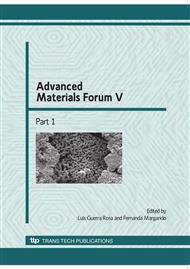p.1097
p.1105
p.1112
p.1119
p.1125
p.1131
p.1137
p.1143
p.1150
Material Parameter Identification of Cazacu’s Model for Ti6Al4V Using the Simulated Annealing Algorithm
Abstract:
Phenomenological yield criteria are generally described by many material parameters. A technique to identify these parameters is required to find the best fit to the results of the mechanical tests. The parameter identification by the classical simulated annealing technique is presented in this paper. This algorithm, based on works by Metropolis et al, is a global optimization method that distinguishes between different local optima to reach the global optimum. The anisotropic model used in this study is the one proposed by Cazacu et al. To prove the efficiency of the proposed algorithm, the material parameters of Ti6Al4V titanium alloy are identified and compared with those obtained using different identification procedures and the same experimental data.
Info:
Periodical:
Pages:
1125-1130
Citation:
Online since:
January 2010
Authors:
Price:
Сopyright:
© 2010 Trans Tech Publications Ltd. All Rights Reserved
Share:
Citation:


